Last Updated on April 13, 2021
Today’s post is my attempt to scratch a subtle, yet persistent mental itch I picked up as Dani and I spent 35 days traveling overland through Patagonia earlier this year.
I once started reading a book called “In Patagonia“. I found the writing as monotonous as the Patagonian steppe it dutifully described, so I never finished it. An impression of Patagonia was made as an untamed, soul-crushingly unvarying place unlike anywhere else in the world.
It was 2003, a time just before Facebook, YouTube, travel blogs and Google Image search would have provided me with millions of ‘real-world’ views of what Patagonia was really like. Instead, I put down the book, never looked at a photo and had only the expectations created by what I myself had imagined.
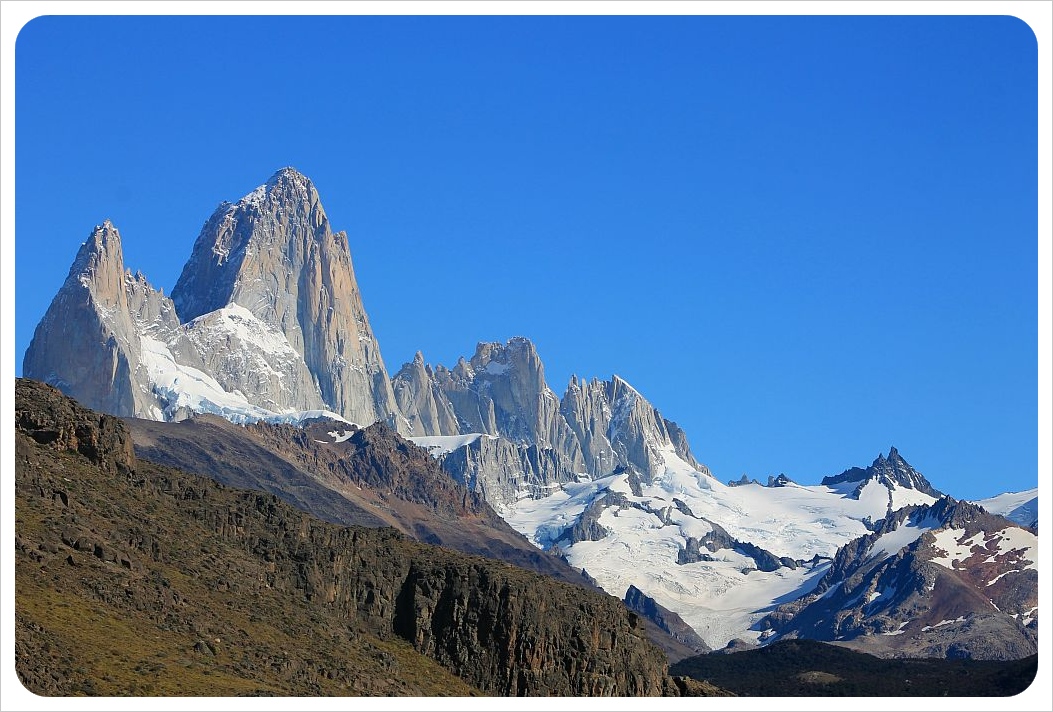 Cut to 2013 when the two of us set off from Santiago, planning each small block of the trip southward as we went. In order to plan, we used personal recommendations from fellow travelers, travel blog posts, Wikitravel, Wikipedia, Lonely Planet, TripAdvisor, Google Maps and travel articles written in national newspapers. Because we were traveling in February peak high season (something we would not recommend), we relied on Booking.com, BookingBuddy.com, Hostelbookers and TripAdvisor online to book ahead when we could.
Cut to 2013 when the two of us set off from Santiago, planning each small block of the trip southward as we went. In order to plan, we used personal recommendations from fellow travelers, travel blog posts, Wikitravel, Wikipedia, Lonely Planet, TripAdvisor, Google Maps and travel articles written in national newspapers. Because we were traveling in February peak high season (something we would not recommend), we relied on Booking.com, BookingBuddy.com, Hostelbookers and TripAdvisor online to book ahead when we could.
Every boulder, llama, emu, and miles-long stretch of nothingness mentioned in ‘In Patagonia’ has been documented somewhere online. Views of hikes we had yet to take, dishes served at restaurants we had yet to visit were all online, and decisions on where to eat, what to hike, what tour companies to choose for the more adventurous activities were decided by this online research, with Lonely Planet as a backup option we tend to use only for the ‘Getting in and Out’ section and many of the maps.
The trip went flawlessly through some of the most incredible landscapes we had ever experienced. You can really feel the difference day by day, through empty barren land, beautiful green lakes, the ever present Andes mountains, glaciers, the weather gets colder and you add a layer of clothing as you head southward step by step to the end of the world.
And yet…part of me felt like I was cheating.
Where was the spontaneity, the risk to match the rugged landscape? No matter how barren and remote each town was, with the exception of El Chalten in Argentina, we had strong enough wireless internet connections in hotels and cafes to plan each step of the way. That is, until we found ourselves entirely stranded and the only way to make it from Porvenir to our final destination, Ushuaia, was to hitchhike across Tierra del Fuego. This was the most adventurous part of our trip, the story we most often tell of Patagonia and the least safe I ever felt all at the same time.
 It was during this time that I read the book Without a Spare, by life-long traveler Bonnie Kassel. We have since met Bonnie in person and are glad to call her a friend (and this month’s GlobetrotterGirl of the Month on Tuesday!). Without a Spare is a memoir spanning her entire life of travel; the title comes from one adventure during her year in Africa when she and her friend were forced to change the tire on their tiny VW Beetle, and continued onward to traverse massive sandstorms in the Sahara for days and days without so much as a spare tire. Focused on telling the adventures, she only offhandedly mentions picking up wire transfers sent to banks abroad or leaving notes for travelers in hotels in order to meet up in another country a few weeks later. She might have meant these as minute details, but as we read the book, it was hard for us to even fathom the logistics of traveling without technology. We transfer money and withdraw it from an ATM within seconds, we add travelers and locals we meet to Facebook and are forever connected.
It was during this time that I read the book Without a Spare, by life-long traveler Bonnie Kassel. We have since met Bonnie in person and are glad to call her a friend (and this month’s GlobetrotterGirl of the Month on Tuesday!). Without a Spare is a memoir spanning her entire life of travel; the title comes from one adventure during her year in Africa when she and her friend were forced to change the tire on their tiny VW Beetle, and continued onward to traverse massive sandstorms in the Sahara for days and days without so much as a spare tire. Focused on telling the adventures, she only offhandedly mentions picking up wire transfers sent to banks abroad or leaving notes for travelers in hotels in order to meet up in another country a few weeks later. She might have meant these as minute details, but as we read the book, it was hard for us to even fathom the logistics of traveling without technology. We transfer money and withdraw it from an ATM within seconds, we add travelers and locals we meet to Facebook and are forever connected.
Bonnie tells stories of travelers hacking their way across swaths of jungle in the name of discovery and exploration. Today, travelers do less discovery and more self-discovery, curating their own travel experiences rather than exploring the unknown.
With today’s technology, travel experiences are more like pruning a bonsai tree than hacking through a jungle.
Such a massive amount of information has killed the need for spontaneity while traveling. 30 years ago there would have been no guidebook, and 10 years ago little online coverage. But today, a smartphone has GPS, and there are guidebooks and apps for everywhere you want to travel.
Does technology create separation?
Not only does access to technology and information affect our expectations, but in how we perceive the entire travel experience. As a photographer, Dani sees the world through a camera lens and even when she is not actually taking pictures, the way she walks through a city is by keeping her eyes out for what would make beautiful pictures. She sees the world in patches of 4 x 6 photos. For others, their world might be shaped in Valencia or Rise filtered Instagram photos or how to edit the recorded experience to upload onto YouTube. This has always been the norm for artists, poets, professional photographers and filmmakers, but today we all have technology as we travel to document and create media to be published in an instant.
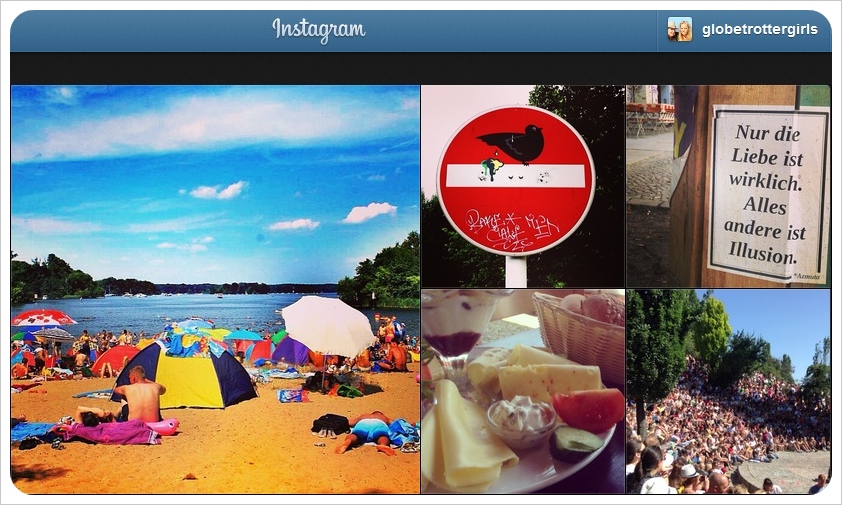 We are all interpreting travel through technology. Spontaneity aside, does technology separate us from the actual experience?
We are all interpreting travel through technology. Spontaneity aside, does technology separate us from the actual experience?
See it. Snap it. Share it or send it.
On the day we arrived in Valdivia, Chile, a massive sea lion jumped over the cement blockade of the famous fish market along the river. Within seconds, dozens of locals and tourists alike became like animal paparazzi, whipping out iPhones, iPods, tablets and digital cameras to film and photograph every second.
There are probably over 1,000 images of this ten-minute block of time.
It was as though an alien had landed. Dani being the only true photographer in the bunch, she jumped down much closer for better photographs and ended up talking to a fish monger about how this happens fairly often. At his insistence, she even ended up petting the blubbery beast before he flopped back into the water.
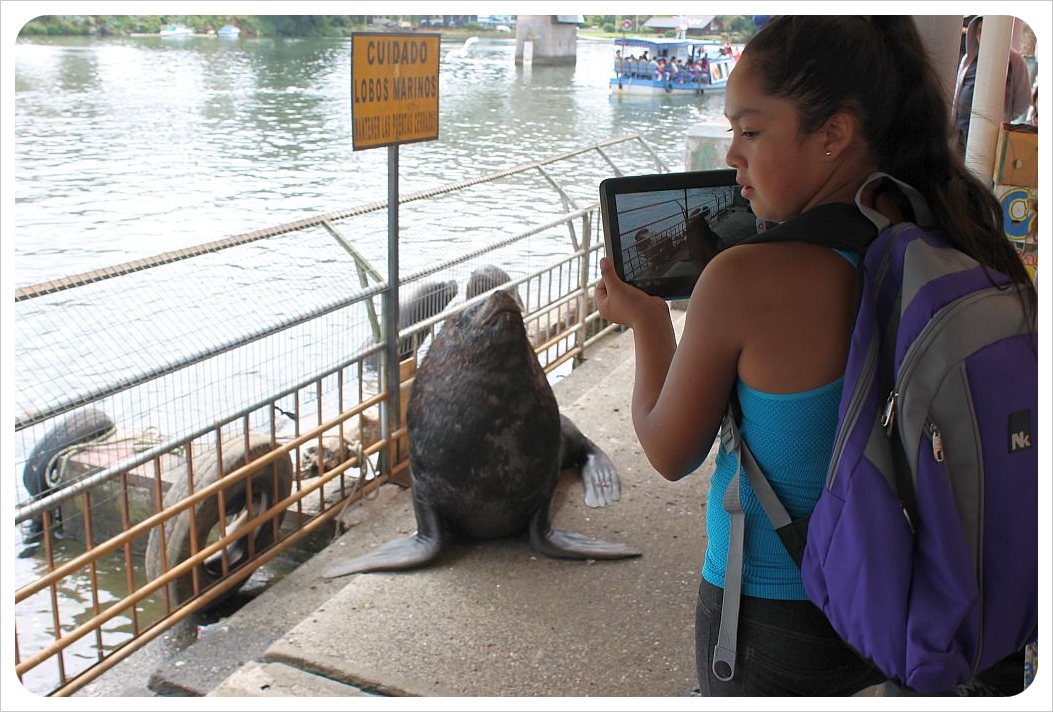 Snap, snap, snap. The people in the crowd raised their tech higher and higher to get the pictures, and then before he was even gone, their attention shifted toward processing and sharing the images of what they had just witnessed. Of all the people who gathered there, I wonder how many of them actually watched the way the fish mongers tossed fish guts over to lure him back into the water.
Snap, snap, snap. The people in the crowd raised their tech higher and higher to get the pictures, and then before he was even gone, their attention shifted toward processing and sharing the images of what they had just witnessed. Of all the people who gathered there, I wonder how many of them actually watched the way the fish mongers tossed fish guts over to lure him back into the water.
It was as though the importance was capturing the image of the experience, rather than experiencing it for themselves.
How much of what travelers do is for the experience vs for the picture of the experience? The worst example of this was in Luang Prabang in Laos.
One popular activity mentioned in every guidebook or blog is to climb to the top of the Phou Si temple at sunset. Climbing to the top of a hill to experience a peaceful sunset at a Buddhist temple.
 In reality, hundreds of people balance on a small outcropping around the top of this temple, elbowing each other out to plant their tripods down to get the best shots of the sunset experience. Snap, snap, snap of professional grade paparazzi lenses was joined by constant chatter by indifferent tourists who made their way up because somewhere online, someone said they should see the sunset up here (and yes, we were guilty of this as well.)
In reality, hundreds of people balance on a small outcropping around the top of this temple, elbowing each other out to plant their tripods down to get the best shots of the sunset experience. Snap, snap, snap of professional grade paparazzi lenses was joined by constant chatter by indifferent tourists who made their way up because somewhere online, someone said they should see the sunset up here (and yes, we were guilty of this as well.)
The crowd missed out on the actual peaceful, contemplative experience in favor of documenting the idea of what that could have been like.
Why technology opens up a world of travel
If this post is spiraling downward into a rant against technology, let me flip that around right now. The truth is, without technology, Dani and I would be unable to live the life of our dreams.
We run an online travel publication from our laptops. Technology allows us, and thousands of people like us, to create a business and travel the world while we do it.
In order to research destinations and experiences, we rely on crowd sourcing websites like Tripadvisor and Foursquare, travel blogs and new apps packed with content in order to focus on what we want to do and share with our readers. We record video on our iPods, take photos with a dSLR, and in order to publish this content, we require hotels and cafes with speedy internet connections.
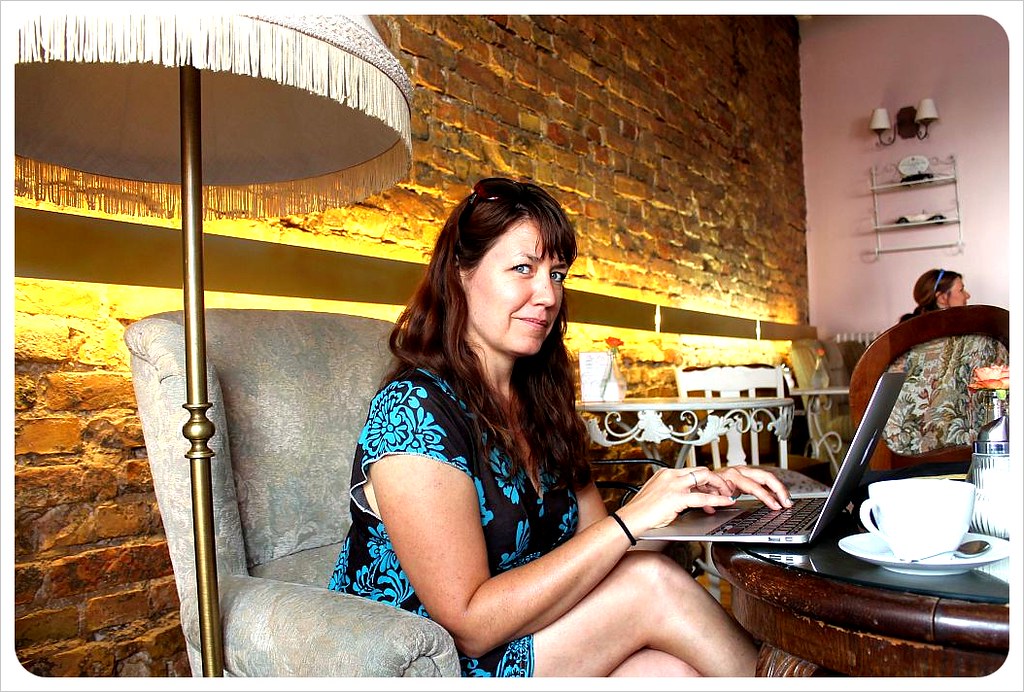 When we get to a new city and we’re starving, Dani hops on Foursquare to find a nearby restaurant that comes highly recommended, Airbnb allows you to find quality apartments to live in local neighborhoods, and housesitting websites connect homeowners with housesitters from around the world so everyone can travel longer for else. Want to hitchhike across Germany? There’s an app that gives you wait times for popular pick-up spots on the highway. Love art museums and happen to be in Berlin/London/New York/Singapore? There’s an app dedicated just to that, too.
When we get to a new city and we’re starving, Dani hops on Foursquare to find a nearby restaurant that comes highly recommended, Airbnb allows you to find quality apartments to live in local neighborhoods, and housesitting websites connect homeowners with housesitters from around the world so everyone can travel longer for else. Want to hitchhike across Germany? There’s an app that gives you wait times for popular pick-up spots on the highway. Love art museums and happen to be in Berlin/London/New York/Singapore? There’s an app dedicated just to that, too.
When we meet other travelers, we also trade technology – more specifically we trade folders stuffed with hundreds of gigabytes of movies, music, TV shows and eBooks.
In fact, the laptop has become the modern day campfire that travelers gather around.
The conversation might be about a shared love of The Wire or Dexter, whether the common ground is pop culture or not, the connection with new people is created nonetheless.
When we met Without a Spare author Bonnie Kassel for dinner in New York City recently, she said something that really made me think. “Whatever happened to travel being about getting away from it all?” And thinking about Bonnie’s incredible adventures, a part of me is drawn to travel for escape’s sake.
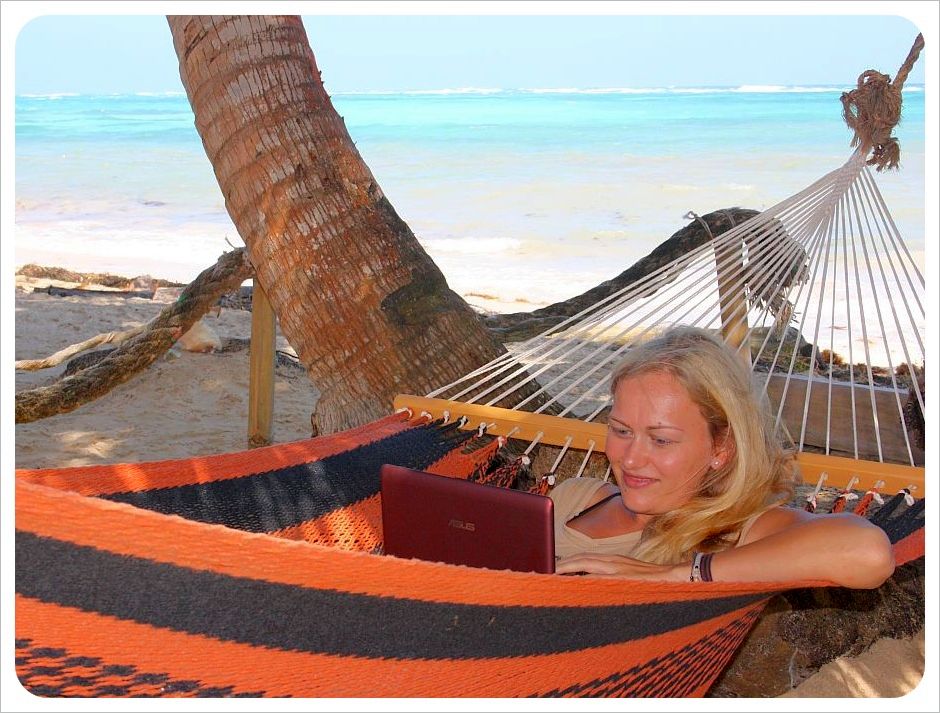 In this TED Talk, author Sherry Turkle argues that devices remove us from the highs and lows in life because they allow us to dip in and out of a virtual world. She’s got a point. There you are, enjoying the beach so much, you want to share a picture on Instagram. Suddenly you’re so busy hashtagging you end up losing five minutes of the very moment that was so good that you had to Instagram it in the first place.
In this TED Talk, author Sherry Turkle argues that devices remove us from the highs and lows in life because they allow us to dip in and out of a virtual world. She’s got a point. There you are, enjoying the beach so much, you want to share a picture on Instagram. Suddenly you’re so busy hashtagging you end up losing five minutes of the very moment that was so good that you had to Instagram it in the first place.
Travel is no longer about #escape
That aside, however, I argue that technology is what allows us to create and sustain meaningful connections through and in spite of travel. My best friend just had a baby this week in Denver (welcome to the world, little Lina!), and I spent half an hour ogling at her from Berlin via FaceTime. Dani gets pictures of her nieces sent to her via iMessage almost every day. These pictures allow her to witness little moments in their lives she would otherwise miss if she still chose to be nomadic in a time before this level of personal technology.
Travel isn’t about escape, anymore, nor is it solely about discovery. Technology today allows travel to be about expanding your horizons and maintaining meaningful connections with friends and family as with the new friends you meet along the way.

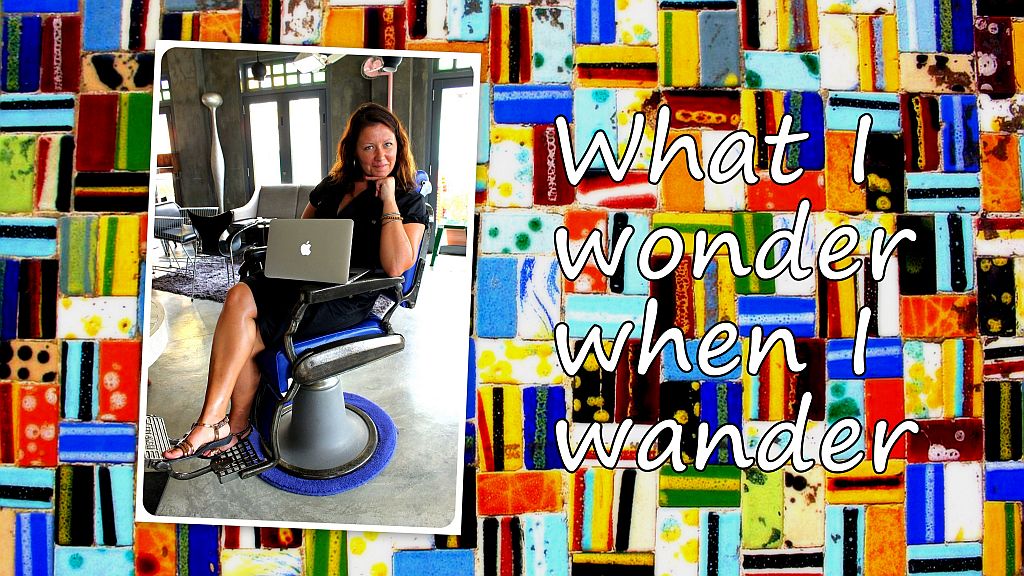
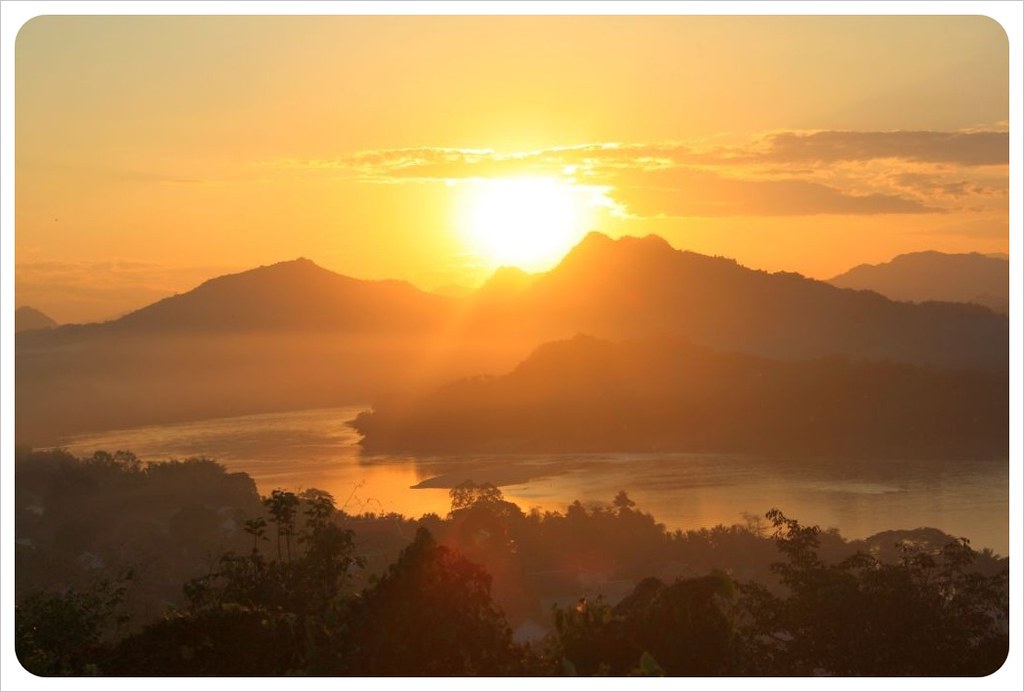
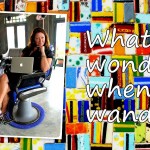
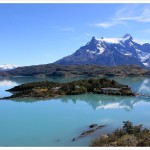
Peter Korchnak
Saturday 10th of August 2013
Amen...
...I say in a comment on a lengthy and thoughtful blog post posted on the internet in contemplation of technology's impact on travel. I almost wish I could be writing this on a high-speed, InterCity train with a wifi connection but I'm just in a good old apartment.
Enjoy the view from the hammock!
TammyOnTheMove
Wednesday 7th of August 2013
When I was little people shared photos of their travels through long and boring slideshows in their living rooms. Aw, the good old 80ies. Now people share their photos through facebook or instagram. So interesting how things have changed.
Bonnie Kassel
Monday 5th of August 2013
Yes Sam, I can imagine only being able to communicate with family and friends by post. But I'm not sure you can imagine the incredible excitement of waiting and finally receiving a letter from someone you love who's away.! And now we have a box of these long cool letters with amazing stamps right at our fingertips! The love letters sent from my father to my mother from overseas during WWII are still treasured now seventy years later.
Jess
Tuesday 6th of August 2013
Bonnie, that's so true - you know we still send postcards, but people aren't even that excited to get them, probably because they are already aware of what we are up to through social media. But they are the only non-digital evidence that we ever traveled, because everything we do is online...
Sam
Sunday 4th of August 2013
It's a double-edged sword, really. Without technology, where would we be? But with the technology, we miss out on those moments that we want to record in the first place, as you say!
I went up to watch that sunset in Luang Prabang on my birthday in 2009, and I coiuldn't believe the scene. Unfortunately, I felt I had to head back down before the sun had even set because I couldn't face climbing down those steps with 100 other people at the same time. It also reminds me of this post you wrote: http://globetrottergirls.com/2012/08/bamboo-train-battambang-cambodia/
I think that I'm not quite old enough (though Zab is!) to appreciate what it must have been like to travel without technology, or at the very least email. When my mother was 23, she went to India on a work placement and to travel for about 2 months. And she could only communicate with her family by post. BY POST! Can you imagine?
At the same time, though, it annoys me when, for example, my teenage students would say if stranded on a desert island that their mobile phone would be the most important thing for them to be able to keep with them. (Sorry dude; no power outlets or phone signal on this imaginary island.) Are people really becoming that dependent?
Lunaguava
Friday 2nd of August 2013
Thank you for this post, which hits a lot of tender buttons. Being a fan of pre-ATM travel writing (Evelyn Waugh, Paul Bowles, early Paul Theroux), I've always equated foreign lands and the act of travel itself with the evanescent mystery of the uncharted road, only occasionally noted down on pen and paper. On previous journeys around the world, we have prided ourselves on leaving laptops and phones at home, leaving only room for a mediocre camera. However, we have recently embarked on our own long term travel experiment. Having decided to keep a blog detailing our trails and travails (I know, how original!), I've come to the realization I'm spending a great deal of my time in front of a laptop - either trying to come up with something mildly appealing for the blog or just finding accommodation and other pedantic endeavors.
I can completely relate to the Luang Prabang situation; same with the Angkor Wat anecdote mentioned by Joan above. I've been to both places, and found their beauty sometimes undervalued by fellow travelers too busy trying to get the perfect photo or too jaded to really care.
History is a continuous but evolving loop. At some point, receiving Time magazine in a remote corner of the world with a mere 2 week delay must have been perceived as the height of technological and logistical achievement. Nowadays, we have new tools and gadgets, but the goal is still the same: to stay connected. Does it take away from the travel experience? Are we failing to become immersed in a culture/place because we are too busy letting others know we're there? I am for now unable to shake off the nagging feeling that I'm somehow cheating. But I guess I'll be blogging about it too at some point…